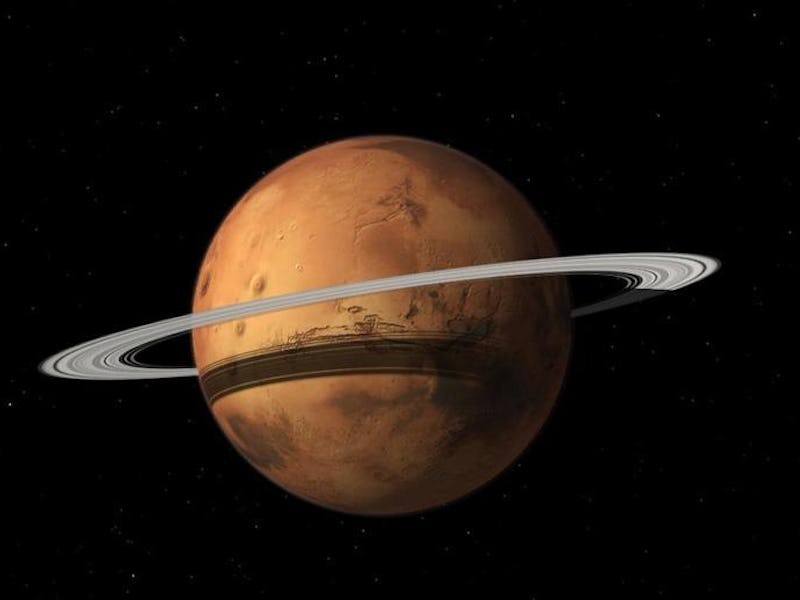Mars Will Follow Saturn's Example and Get Itself a Ring
Mars' moon Phobos is disintegrating, but the Red Planet is getting a cool consolation prize.

A few weeks ago, NASA scientists announced that Phobos, the Martian moon, is slowly dying. The 16 mile-long rock is being torn apart by tidal forces between itself and its parent planet. The big question that lingered on everyone’s mind (well, some people’s minds): What’s going to happen when Phobos disintegrates?
Now we have an answer. Mars is going to replace its moon with a badass ring, like the ones the gas giants (Jupiter, Saturn, Uranus, and Neptune) have been flaunting.
But don’t get too excited too fast. Phobos is being torn apart right now, but it won’t fall apart for another 20 to 40 million years. After that, the ring of rocks that will orbit the Red Planet will only persist for anywhere between one to 100 million years. The predictions were made by University of California, Berkeley planetary scientists that have been modeling the the cohesion of Phobos’ rocky outsides with regards to the gravitational forces acting between itself and Mars.
Phobos is actually moving towards Mars by a few centimeters every year (as opposed to our Moon moving away from Earth a little each year). As tidal forces get stronger, Phobos will either break apart or crash into its planet (which is how Mars may have already killed one of its other moons long ago).
As we mentioned when the news first broke, Phobos has fractures on its surface that are indicative of how the rock is slowly being stressed. It’s also estimated that under the surface, Phobos has an interior that’s literally a pile of rubble. The UC Berkeley scientists think the resulting crumbs scattered from Phobos’ scattered corpse will simply continue to orbit Mars and distribute like a planetary ring. Over the next millions of years, those rocks would continue to fall into the red planet till all that’s left is Mars’ other moon, Deimos.
Much of this depends on when Phobos decides to break apart. The closer to Mars, the more likely it would form a narrow and massively dense ring comparable to one of Saturn’s, but rain down meteors onto the red planet’s surface relatively quickly. If it’s father away, the ring would be much more modest-looking, but last longer.
If Mars gains a ring, it will be the first planet this side of the asteroid belt — and the first rocky planet of the solar system — in possession of one. And that will only raise hopes that Mercury, Venus, and of course Earth get their own rings soon enough.
To paraphrase Drake and Future: We got a really big team, and they need some really big rings. The year 50,000,000 A.D. will be a great time to be alive.